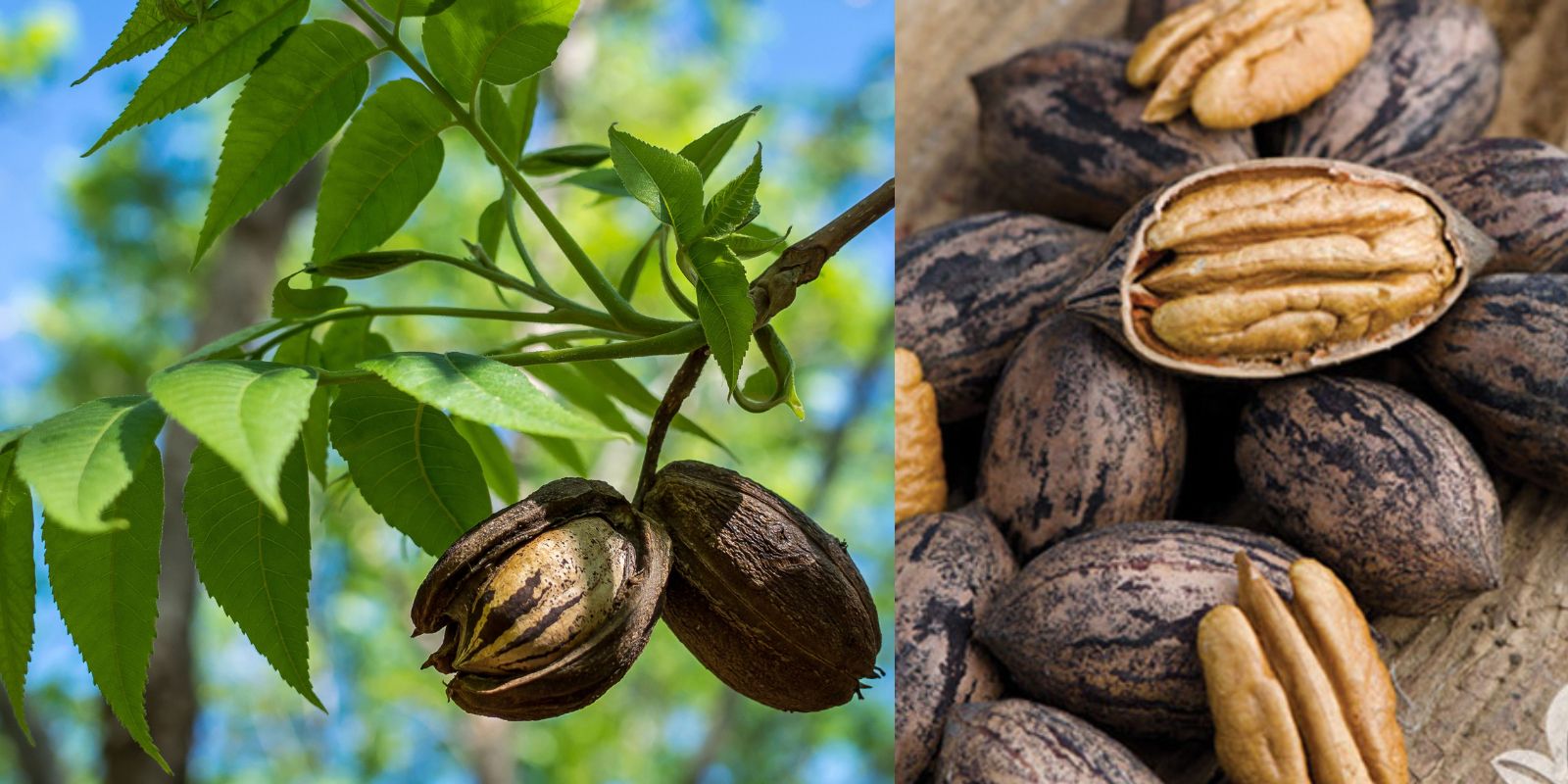Pecan trees, known for their delicious nuts and stunning foliage, are a fantastic addition to any garden or landscape. Growing pecans from seeds can be an incredibly rewarding experience, allowing you to enjoy fresh, homegrown nuts while also providing shade and beauty to your outdoor space. This article will guide you through the entire process of growing pecan trees from seeds, covering everything from selecting the right seeds to nurturing your trees to maturity.
Understanding Pecan Trees
Before diving into the planting process, it’s essential to understand what pecan trees need to thrive. Native to North America, these deciduous trees prefer warm climates and well-draining soil. They can grow to heights of 70 to 100 feet and require full sunlight for optimal growth. Understanding these requirements will help you select the right location for your trees.
Benefits of Growing Pecan Trees
- Delicious Nuts: Pecans are not only tasty but also packed with nutrients, making them a healthy snack option.
- Shade and Beauty: Pecan trees provide excellent shade and add aesthetic value to your garden or yard.
- Sustainable Practice: Growing your own nuts reduces the need for store-bought options, which often come with packaging and transportation costs.
Step-by-Step Guide to Growing Pecan Nuts from Seeds
Step 1: Selecting Quality Seeds
The first step in growing pecan trees from seeds is selecting high-quality nuts. Choose fresh, healthy pecans from a reputable source, such as a local farmer’s market or specialty store. When selecting seeds, look for:
- Whole Nuts: Ensure that the nuts are intact and not cracked or damaged.
- Freshness: The fresher the nut, the higher the chance of successful germination. Avoid old or shriveled nuts.
Step 2: Stratification Process
Pecan seeds require a process called stratification to simulate winter conditions, which helps them germinate. Here’s how to stratify your seeds:
- Soaking: Start by soaking the seeds in water for 24 hours. This will help to soften the seed coat and prepare it for germination.
- Damp Paper Towel: After soaking, place the seeds in a damp paper towel. Ensure the towel is moist but not soaking wet.
- Plastic Bag: Put the wrapped seeds in a plastic bag and seal it. This will help retain moisture.
- Refrigeration: Place the bag in the refrigerator for about 60 days. Check periodically to ensure the paper towel remains damp.
Step 3: Preparing the Soil
After the stratification period, it’s time to prepare the soil for planting. Follow these guidelines:
- Choose a Location: Select a sunny location with plenty of direct sunlight. Pecan trees thrive in full sun.
- Soil Quality: Ensure the soil is well-draining. If your soil is heavy clay or compacted, amend it with organic matter, such as compost or aged manure, to improve drainage and fertility.
- pH Levels: Pecan trees prefer slightly acidic to neutral soil (pH 6.0 to 7.0). Conduct a soil test to determine your soil’s pH and amend it as necessary.
Step 4: Planting the Seeds
Once the soil is prepared, you can plant the seeds:
- Planting Depth: Plant the seeds about 1 to 2 inches deep in the soil. If you’re planting multiple seeds, space them at least 15-20 feet apart to allow for mature tree growth.
- Orientation: Place the seeds with the pointed end facing downwards to encourage proper root development.
Step 5: Watering and Maintaining Moisture
After planting, it’s crucial to keep the soil consistently moist:
- Initial Watering: Water the planted seeds thoroughly after planting to help settle the soil around them.
- Regular Watering: Continue to water regularly, ensuring the top inch of soil remains moist. Avoid overwatering, as soggy soil can lead to root rot.
Step 6: Fertilization
As your seeds germinate and seedlings begin to emerge, providing them with the right nutrients is essential:
- Fertilizer Type: Use a balanced fertilizer (such as a 10-10-10 NPK ratio) to support healthy growth.
- Application Frequency: Fertilize every few months during the growing season, following the instructions on the fertilizer package for application rates.
Step 7: Patience and Care
Growing pecan trees from seeds requires patience. Here are some tips for ongoing care:
- Monitor Growth: Be patient as your seeds germinate, which can take anywhere from a few weeks to several months.
- Pest and Disease Management: Regularly check for pests, such as aphids and caterpillars, and diseases like leaf spot or root rot. Implement organic pest control measures as needed.
- Pruning: Once your trees are established, consider light pruning to promote strong branching and healthy growth.
Step 8: Transplanting
Once your pecan seedlings reach a height of about 12-18 inches and have developed a strong root system, it’s time to consider transplanting:
- Timing: Transplant in the early spring or fall when temperatures are milder.
- Transplanting Method: Carefully dig around the seedling, keeping as much of the root ball intact as possible. Replant it in a larger space or a different location with similar soil conditions.
Step 9: Long-Term Care
After your pecan trees are established, they will require ongoing care:
- Watering: Continue to water deeply during dry spells, especially during the first few years.
- Fertilization: As the tree matures, reduce the frequency of fertilization. Mature trees typically require less fertilizer than young trees.
- Mulching: Apply mulch around the base of the tree to help retain moisture, suppress weeds, and regulate soil temperature.
Conclusion
Growing pecan trees from seeds is a fulfilling journey that allows you to enjoy fresh, homegrown nuts while beautifying your outdoor space. With the right care and attention, your pecan trees will thrive, providing delicious nuts and shade for years to come. Remember, patience is key when growing from seeds, so enjoy the process and celebrate each step of your gardening journey.
Call to Action
Start your pecan tree-growing adventure today! Share your experiences, tips, and photos with fellow gardening enthusiasts using the hashtags below, and inspire others to grow their own delicious pecans.

